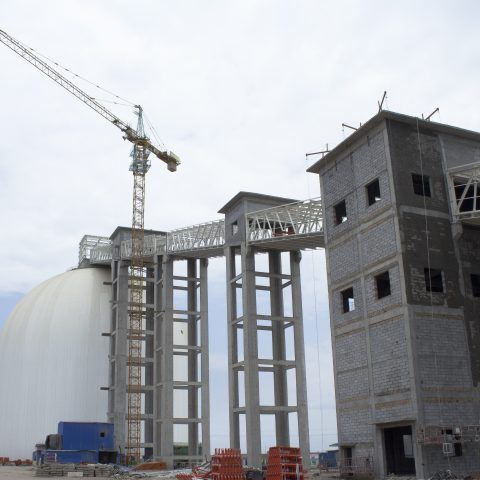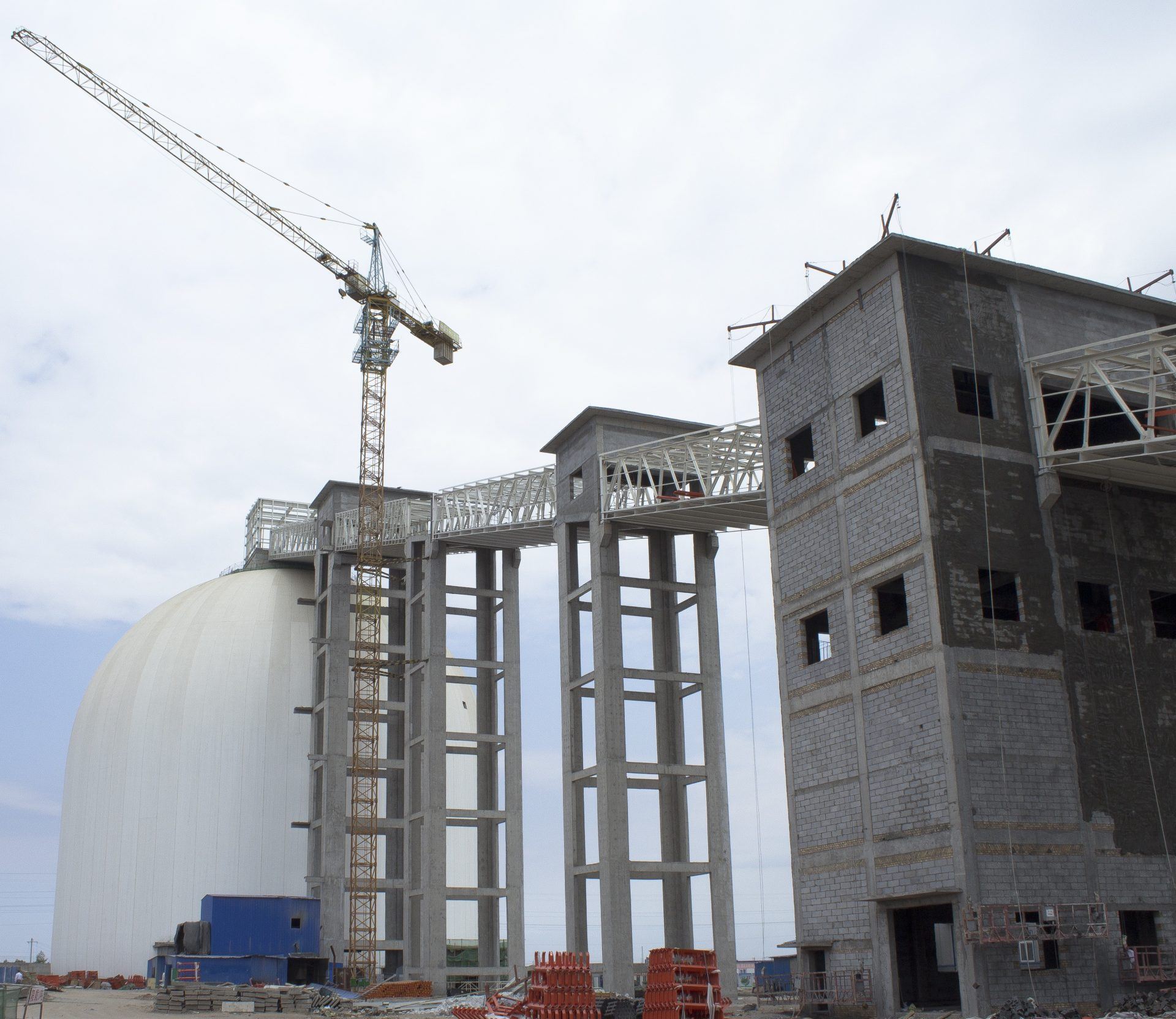Editor’s note: This is an excerpt from a feature that ran in World Coal’s March 2017 issue.
To meet the electricity needs of a burgeoning middle class, China Coal needed serious storage times six.
The company contracted Dome Technology of Idaho Falls, Idaho, USA, to provide bulk-storage for two sites, one in Hulusu and the other in Menkeqing. Each site features three coal domes capable of storing 60,000 metric tons apiece.
At both sites, Dome One houses coal arriving fresh from the mine. As coal exits the dome, it passes through a cleaning and washing process before being milled to achieve the right-sized pieces. From there, coal is dumped via conveyor into Domes Two and Three, where it later exits the structures in one of three tunnels on its way to trains waiting outside.
Domes make more storage possible within a smaller footprint, so China Coal can store more in a smaller footprint than warehouses or flat storage would allow. Product can also be stacked deeper within a dome, meaning that for many companies, one dome might accommodate the same amount of material as multiple flat-storage structures.
The storage space available on a relatively small piece of land was one of the most significant dome advantages, explained Zhao Jiapeng of China Coal. But storage wasn’t the only consideration. If the project were to be a success, China Coal also needed speed in reclaim and safety solutions.
Efficient reclaim: 100 percent live-reclaim full-hopper floor
If China Coal’s domes were going to deliver on speed and necessary throughput, selecting the right reclaim system was a must. In each dome, the reclaim workhorse is a 100 percent live-reclaim full-hopper system, similar to a series of funnels situated side by side through which coal flows under its own weight rather than being moved by loader or other mechanical equipment. The full-hopper floor system is controlled with gates on the hoppers so site superintendents can meter flow to the belts. The floor’s design allows each dome to be emptied every three days, meeting the company’s handling needs.
“China Coal was looking for high throughput without any mechanical cleanup, and that hopper floor system allowed them to do that,” said Dome Technology CEO Bradley Bateman, who acted as project engineer for the six domes.
This innovative model is ideal for lower-volatility coal, like that stored by China Coal, because the product’s shelf life is long enough to be safely stored in this environment. “It’s pretty new—the industry hasn’t done a lot of this because of the scale,” Bateman said.
The full-hopper system provides first-in, first out reclaim desirable with types of coal prone to spontaneous combustion. Since self-combustion is mainly dependent on time, the longer coal sits, the more likely it will combust. According to engineer for Dome Technology Adam Aagard, storage structures with just one central tunnel will reclaim a portion of the bottom cone of product, but everything off to the side comprises a static pile. Until that portion of the pile is drawn down and moved via loader, aging in pile is a real concern.
A system providing full cleanout without mechanical parts is an ideal option. “There are other systems, but not too many, that companies can achieve 100 percent reclaim with, but they cost money to run; they break down. Gravity doesn’t break down; gravity doesn’t cost money to run,” Aagard said.
Now in their second year of operation, the six China Coal domes are making it possible for large amounts of coal to be mined and properly stored in north China’s Inner Mongolia province. With 100 percent live reclaim, fire prevention, and environmental protection covered, domes meet and exceed the needs of coal companies around the world.
For more information about safety solutions and environmental protection, see the full article by visiting this site and clicking on March 2017’s “Preview PDF.”

